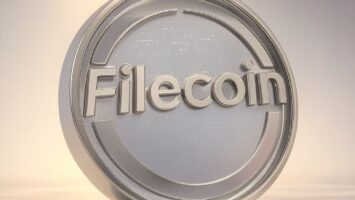Disclaimer : This post is for educational purpose only. Not financial advice. Do your own research. We do not give buy/sell recommendations.
What the Heck Are NFTs, Anyway?
Picture this: NFTs, or Non-Fungible Tokens, are like the VIP backstage passes of the internet. They’re unique digital thingamajigs stored on a blockchain—think of that as a super-secure, unhackable diary that keeps track of who owns what. Unlike Bitcoin or Ethereum, where every coin is the same as the next (like dollar bills in your wallet), every NFT is a one-of-a-kind snowflake. We’re talking digital art, music, tweets, or even a video of your dog doing something ridiculous. You can’t just trade one for another and call it even—they’ve each got their own personality, and apparently, their own price tag.
Here’s where it gets weird: when you buy an NFT, you’re not always buying the thing itself. Nope, you’re snagging a fancy digital certificate that says, “This is mine!” Imagine buying a signed movie poster but not owning the movie. Anyone can still see the artwork or hear the song online, but you get to strut around saying, “Yeah, I’ve got the original.” And somehow, that flex can cost you more than a used car—or in some cases, a mansion. Just ask Beeple, the digital artist who sold an NFT for $69 million. Meanwhile, I’m over here trying to figure out if my stick-figure doodles are worth a buck fifty.
How Do You Even Make or Buy One?
Okay, let’s get into the nitty-gritty without making it sound like a lecture from your least favorite professor. Creating an NFT is like playing a video game where you’re the wizard. You take your masterpiece—say, a drawing of your cat in a spacesuit—upload it to a platform, and “mint” it into existence. That just means you’re stamping it with a blockchain seal of approval. Of course, you’ve got to pay a fee for this magic trick, called “gas,” which is priced in cryptocurrency. Depending on the day, it’s either “ouch, my wallet” or “guess I’m eating ramen for a month.”
Once it’s minted, you can slap it up for sale on marketplaces like OpenSea or Rarible—think eBay, but for digital bragging rights. Buyers swoop in with their crypto wallets (imagine a digital piggy bank stuffed with Ethereum), bid on your creation, and boom—you’re in business. Want in on the buying action? You’ll need a wallet too, loaded with crypto, and a willingness to gamble that the NFT you’re eyeing won’t tank faster than my attempts at karaoke.
Oh, and here’s a fun twist: owning an NFT doesn’t always mean you own the rights to the thing it represents. It’s like buying a souvenir T-shirt from a concert but not owning the band’s music. The artist can still sell prints or plaster it on billboards, and you’re just sitting there with your pricey token going, “Wait, what?”
Why Are People Obsessed with These Things?
For creators, NFTs are the golden ticket. Artists, musicians, even that kid who made a viral meme can skip the gatekeepers—no more kissing up to galleries or record execs. You sell straight to your fans, pocket more of the cash, and even set up royalties so you get a cut every time your NFT changes hands. It’s like cutting out the middleman and laughing all the way to the bank, assuming the bank accepts crypto.
They’re popping up everywhere, too. Gamers are trading rare swords or funky character skins. Some folks are even tying NFTs to real stuff, like houses or cars—though I’d hate to be the guy who loses his mansion because he forgot his password. And don’t get me started on the metaverse, where people are buying virtual land like it’s Monopoly, except the rent’s in Ethereum.
The Catch (Because There’s Always a Catch)
Now, before you pawn your grandma’s jewelry to jump on this train, let’s talk risks. The NFT market is like a rollercoaster designed by a mad scientist—prices soar to the moon one day and crash into the gutter the next. Remember those Bored Ape NFTs that were worth more than my life savings? Some of those monkeys are now barely worth a banana. It’s all hype, hope, and a sprinkle of “please don’t let this be a mistake.”
Then there’s the shady side. Scammers are having a field day—fake NFTs, phishing traps, you name it. It’s like the Wild West out there, except instead of six-shooters, they’re wielding keyboards. People have even minted stolen art as NFTs, selling it like they’re Picasso reincarnated. Buyer beware doesn’t even cover it.
And let’s not ignore the elephant in the room: the environment. Some blockchains suck up energy like a kid with a milkshake straw, which has eco-warriors up in arms. Sure, Ethereum’s gone greener recently, but the damage was done—NFTs got a rep as planet-wreckers. At least we’re not printing paper deeds, right? Small victories.
So, Are NFTs Genius or Just a Giant Joke?
Honestly, it’s anyone’s guess. Some say NFTs are the future—rewriting how we own stuff online and giving creators a fair shake. Others reckon it’s a bubble waiting to pop, leaving a trail of broke dreamers clutching worthless JPEGs. Remember Beanie Babies? Yeah, it could go that way. Or maybe it’s more like early internet stocks—some flop, some turn into Amazon.
One thing’s certain: NFTs have everyone buzzing. Celebs like Snoop Dogg and Paris Hilton are all in (because of course they are), and even after the 2021 hype died down, they’re still kicking around. Whether you’re a fan or a skeptic, you can’t deny they’ve shaken things up. So, if you’re tempted to dive in, just keep your wits about you, don’t bet the farm, and maybe have a laugh along the way. After all, in a world where a pixelated punk can outprice your house, you’ve got to chuckle—or you’ll cry. Your call.
Disclaimer : This post is for educational purpose only. Not financial advice. Do your own research. We do not give buy/sell recommendations.



Comments (No)